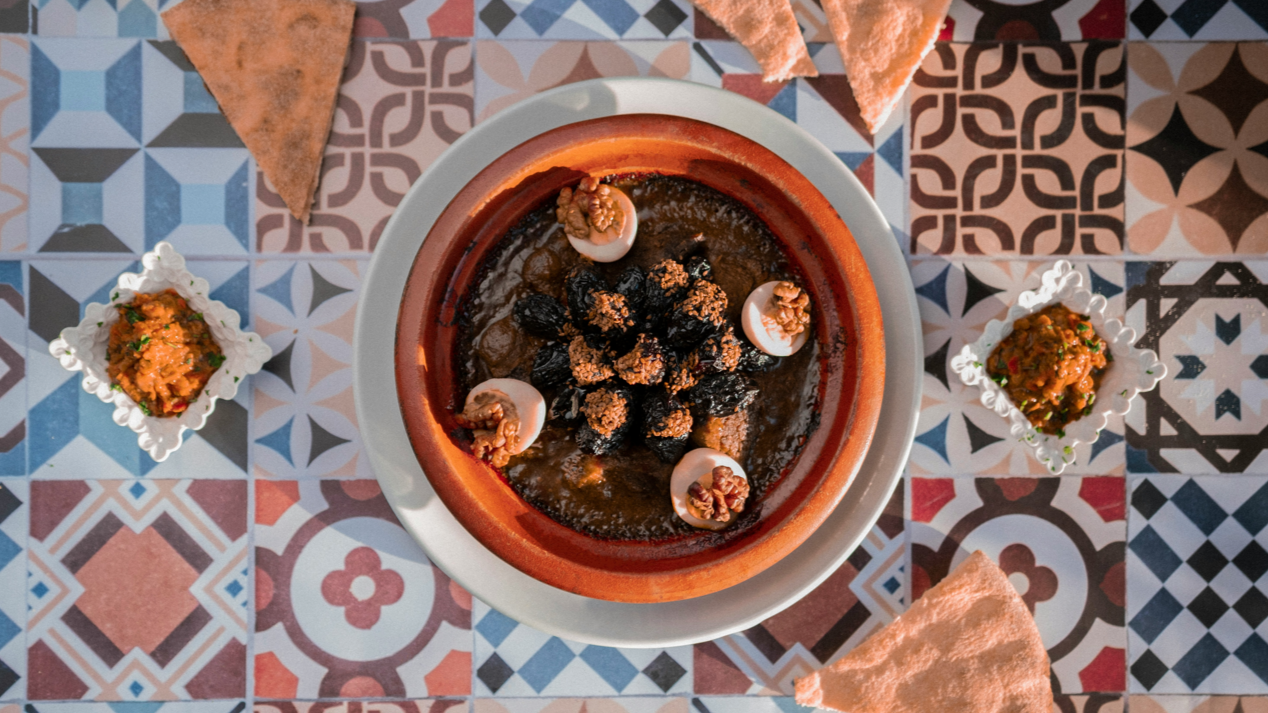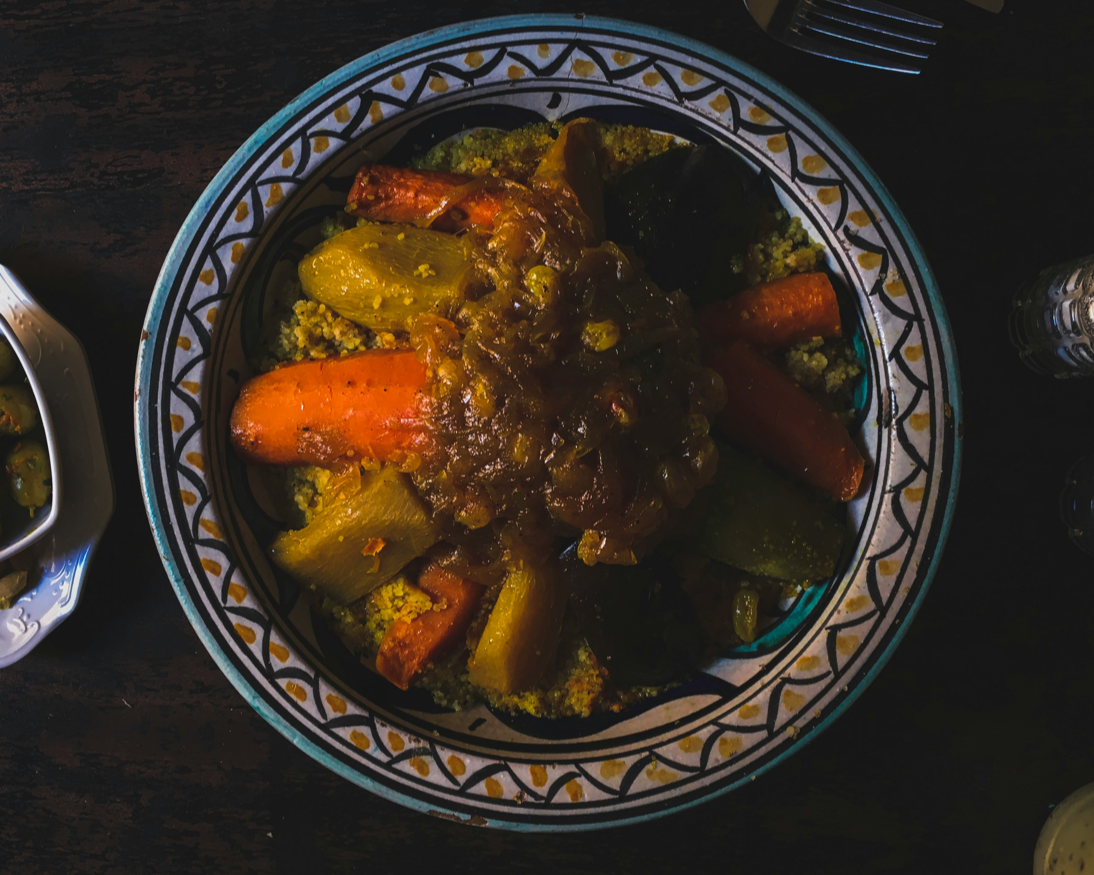Spice Route Delights: A Guide to Morocco's Top Foods and Dining Experiences
Photo by HamZa NOUASRIA
Morocco's culinary landscape is a vibrant tapestry of flavors, aromas, and traditions, inviting travelers on an unforgettable gastronomic journey. From bustling souks to serene riad courtyards, every meal tells a story of ancient spice routes and rich cultural heritage. Prepare to awaken your senses as we dive into the heart of Moroccan cuisine, exploring iconic dishes and truly authentic dining experiences.
A Symphony of Spices: Essential Moroccan Dishes
Moroccan food is a celebration of contrasting flavors – sweet and savory, tender and crisp – all harmonized by a masterful blend of spices like cumin, saffron, cinnamon, and the renowned Ras el Hanout.
Photo by Louis Hansel
Photo by kochtopf
🍲Tagine: More than just a dish, the tagine is an iconic conical earthenware pot and the slow-cooked stew prepared within it. It's a cornerstone of Moroccan dining, featuring tender meats (chicken, lamb, or beef), fish, or vegetables, simmered with aromatic spices, preserved lemons, and olives. Each region, and indeed each household, boasts its own unique tagine recipe, making every encounter a delicious surprise.
🥘Couscous: A true North African staple with Berber origins, couscous is traditionally served on Fridays after prayer. This versatile dish consists of delicate semolina grains, often topped with a rich stew of vegetables, chickpeas, and tender lamb or chicken. Home-made couscous, prepared with love over hours, offers a depth of flavor far beyond its commercial counterpart.
🥧 Pastilla (B'stilla): Prepare for a delightful paradox with pastilla, a magnificent sweet and savory pie. Traditionally made with pigeon (though chicken is common today), the shredded meat is spiced and encased in delicate, filo-like pastry, then dusted with powdered sugar and cinnamon. It’s a dish of celebration, offering an exquisite balance of textures and tastes.
🍵 Moroccan Mint Tea: The heart of Moroccan hospitality, serving mint tea is an elaborate ritual. More than just a beverage, it's a symbol of friendship and welcome. Made with green tea, fresh mint leaves, and generous amounts of sugar, it’s poured from a height into small, decorative glasses, creating a frothy top and a refreshing, invigorating experience.
Immersive Dining: Beyond the Plate
Moroccan cuisine isn't just about what you eat, but where and how you experience it.
Photo by Beatrice Sana
Jemaa el-Fnaa Food Stalls, Marrakech: As dusk falls, Marrakech's Jemaa el-Fnaa square transforms into an exhilarating open-air restaurant. Navigate the fragrant steam and lively chatter to discover rows of food stalls serving everything from grilled skewers, harira soup, and snail soup, to fresh orange juice. It’s a sensory overload and an essential street food adventure, but be sure to choose stalls with visible activity and good hygiene. For a truly adventurous bite, seek out Mechoui Alley for slow-roasted lamb or even steamed sheep's head.
Riad Dining: An Authentic Oasis: For a more intimate and serene experience, dine in a traditional Moroccan riad. These guesthouses often feature stunning courtyards and rooftop terraces, offering a tranquil escape from the bustling medina. Riad restaurants pride themselves on serving authentic, home-cooked Moroccan dishes, often prepared with fresh, local ingredients. It's a chance to savor refined flavors in a beautiful, historic setting, providing a true taste of Moroccan hospitality.
Mechoui: The Feast of Feasts: A mechoui is a traditional Moroccan roasted lamb dish, typically reserved for special occasions and large gatherings. A whole lamb is seasoned with a blend of spices and slow-roasted, often in a traditional clay oven, until the meat is incredibly tender and falls off the bone. This communal dining experience, where the meat is often eaten with fingers, embodies the spirit of Moroccan celebration and sharing.
Morocco’s culinary landscape is an extraordinary journey for your palate, offering a rich tapestry of flavors, aromas, and centuries-old traditions. From the comforting warmth of a tagine to the vibrant energy of Jemaa el-Fnaa, every meal is an invitation to connect with the heart and soul of this enchanting country. Eager to savor these exotic flavors? Talk to our travel agents to add a custom market tour and cooking class to your trip itinerary. Let Go Beyond Travel craft a culinary adventure that will tantalize your taste buds and create lasting memories.
#MoroccanCuisine #Tagine #Couscous #MintTea #JemaaEl-Fnaa #FoodTour
📦 Key Takeaways
Diverse Flavors: Moroccan food is a rich mix of Berber, Arab, Andalusian, and Mediterranean influences, defined by its aromatic use of spices.
Must-Try Dishes: Essential dishes include Tagine (slow-cooked stew), Couscous (a Friday tradition), the sweet and savory pastry Pastilla, and the ceremonial Moroccan Mint Tea.
Street Food Adventure: Experience vibrant street food culture, particularly in Marrakech's Jemaa el-Fnaa square.
Authentic Dining: Enjoy intimate, traditional cooking and hospitality by dining in a riad.
Communal Feasting: Look for a traditional Mechoui feast (slow-roasted lamb) for a special, communal dining experience.




